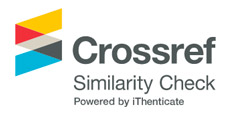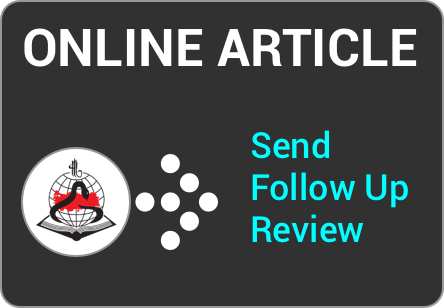Open Access
Peer Reviewed
ORIGINAL RESEARCH
977 Viewed941 Downloaded
Gestational Trophoblastic Disease: Clinical Management and Outcomes: A Retrospective Study
Received: 16 Dec 2024 | Accepted: 04 Feb 2025 | Available online: 20 Feb 2025
JCOG. 2025;35(1):25-31
DOI: 10.5336/jcog.2024-107610
Article Language: EN
Article Language: EN
Copyright Ⓒ 2025 by Türkiye Klinikleri. This is an open access article under the CC BY-NC-ND license (http://creativecommons.org/licenses/by-nc-nd/4.0/)
ABSTRACT
Objective: Evaluation of clinical management, pathological features and outcomes of patients diagnosed with gestational trophoblastic disease (GTD) in our clinic. Material and Methods: Thirty nine patients who were diagnosed with GTD in our clinic between October 2016 and June 2020 were included in this study. Demographic, clinical and pathological characteristics of the patients, treatment and follow-ups and outcomes were evaluated retrospectively. Results: In our study, a total of 39 GTD cases, including 35 cases reported as hydatiform mole (HM) (14 complete moles, 19 partial moles, 2 complete/partial moles cannot be differentiated) and 4 cases of gestational trophoblastic neoplasia (GTN) were included in the study. Post-molar GTN was diagnosed in 2 patients. Omentum biopsy was performed in a 41-year-old patient with a history of abdominal pain with elevated human chorionic gonadotropin levels and a history of total abdominal hysterectomy and bilateral salpingo-oophorectomy 8 months ago due to adnexal mass. Biopsy result revealed a malignant tumor with a trophoblastic reaction, the patient received 8 courses of actinomycin-D treatment, and deceased due to diffuse metastatic disease. Conclusion: Our first-line treatment in GTD is D&C. In cases diagnosed with GTN, hysterectomy was preferred in advanced age patients and the patients who completed their fertility. It has been observed that this application reduces the need for and the duration of subsequent chemotherapy.
Objective: Evaluation of clinical management, pathological features and outcomes of patients diagnosed with gestational trophoblastic disease (GTD) in our clinic. Material and Methods: Thirty nine patients who were diagnosed with GTD in our clinic between October 2016 and June 2020 were included in this study. Demographic, clinical and pathological characteristics of the patients, treatment and follow-ups and outcomes were evaluated retrospectively. Results: In our study, a total of 39 GTD cases, including 35 cases reported as hydatiform mole (HM) (14 complete moles, 19 partial moles, 2 complete/partial moles cannot be differentiated) and 4 cases of gestational trophoblastic neoplasia (GTN) were included in the study. Post-molar GTN was diagnosed in 2 patients. Omentum biopsy was performed in a 41-year-old patient with a history of abdominal pain with elevated human chorionic gonadotropin levels and a history of total abdominal hysterectomy and bilateral salpingo-oophorectomy 8 months ago due to adnexal mass. Biopsy result revealed a malignant tumor with a trophoblastic reaction, the patient received 8 courses of actinomycin-D treatment, and deceased due to diffuse metastatic disease. Conclusion: Our first-line treatment in GTD is D&C. In cases diagnosed with GTN, hysterectomy was preferred in advanced age patients and the patients who completed their fertility. It has been observed that this application reduces the need for and the duration of subsequent chemotherapy.
REFERENCES:
- Seckl MJ, Sebire NJ, Berkowitz RS. Gestational trophoblastic disease. The Lancet. 2010;376(9742):717-29. [Crossref] [PubMed]
- Hoffman BL, Schorge JO, Schaffer JI, Halvorson LM, Bradshaw KD, Cunningham FG. Williams Gynecology. 1st ed. New York: McGraw Hill Companies; 2008.
- Kohorn E. Practice bulletin No. 53-Diagnosis and treatment of gestational trophoblastic disease. Obstetrics and Gynecology. 2004;104(6):1422-3. [Crossref] [PubMed]
- Strom BL, Soloway RD, Rios-Dalenz JL, Rodriguez-Martinez HA, West SL, Kinman JL, et al. Risk factors for gallbladder cancer. An international collaborative case-control study. Cancer. 1995;76(10):1747-56. [Crossref] [PubMed]
- FIGO Oncology Committee. FIGO staging for gestational trophoblastic neoplasia 2000. FIGO Oncology Committee. Int J Gynaecol Obstet. 2002;77(3):285-7. [Crossref] [PubMed]
- Lurain JR. Gestational trophoblastic disease I: epidemiology, pathology, clinical presentation and diagnosis of gestational trophoblastic disease, and management of hydatidiform mole. Am J Obstet Gynecol. 2010;203(6):531-9. [Crossref] [PubMed]
- Altman AD, Bentley B, Murray S, Bentley JR. Maternal age-related rates of gestational trophoblastic disease. Obstet Gynecol. 2008;112(2 Pt 1):244-50. [Crossref] [PubMed]
- Sun SY, Melamed A, Goldstein DP, Bernstein MR, Horowitz NS, Moron AF, et al. Changing presentation of complete hydatidiform mole at the New England Trophoblastic Disease Center over the past three decades: does early diagnosis alter risk for gestational trophoblastic neoplasia? Gynecol Oncol. 2015;138(1):46-9. [Crossref] [PubMed]
- Hou JL, Wan XR, Xiang Y, Qi QW, Yang XY. Changes of clinical features in hydatidiform mole: analysis of 113 cases. J Reprod Med. 2008;53(8):629-33. [PubMed]
- Al-Husaini H, Soudy H, Darwish A, Ahmed M, Eltigani A, Edesa W, et al. Gestational trophoblastic neoplasia: treatment outcomes from a single institutional experience. Clin Transl Oncol. 2015;17(5):409-15. [Crossref] [PubMed]
- Jagtap SV, Aher V, Gadhiya S, Jagtap SS. Gestational trophoblastic disease - clinicopathological study at tertiary care hospital. J Clin Diagn Res. 2017;11(8):EC27-EC30. [PubMed] [PMC]
- Berkowitz RS, Goldstein DP. Clinical practice. Molar Pregnancy. N Engl J Med. 2009;360(16):1639-45. [Crossref] [PubMed]
- Horowitz NS, Goldstein DP, Berkowitz RS. Placental site trophoblastic tumors and epithelioid trophoblastic tumors: biology, natural history, and treatment modalities. Gynecol Oncol. 2017;144(1):208-14. [Crossref] [PubMed]
- Elias KM, Shoni M, Bernstein M, Goldstein DP, Berkowitz RS. Complete hydatidiform mole in women aged 40 to 49 years. J Reprod Med. 2012;57(5-6):254-8. [PubMed]
- Elias KM, Goldstein DP, Berkowitz RS. Complete hydatidiform mole in women older than age 50. J Reprod Med. 2010;55(5-6):208-12. [PubMed]
- Zhao P, Chen Q, Lu W. Comparison of different therapeutic strategies for complete hydatidiform mole in women at least 40 years old: a retrospective cohort study. BMC Cancer. 2017;17(1):733. [Crossref] [PubMed] [PMC]
- Giorgione V, Bergamini A, Cioffi R, Pella F, Rabaiotti E, Petrone M, et al. Role of surgery in the management of hydatidiform mole in elderly patients: a single-center clinical experience. Int J Gynecol Cancer. 2017;27(3):550-3. [Crossref] [PubMed]
- Ning F, Hou H, Morse AN, Lash GE. Understanding and management of gestational trophoblastic disease. F1000Res. 2019;8:F1000 Faculty Rev-428. [Crossref] [PubMed] [PMC]
MENU
POPULAR ARTICLES
MOST DOWNLOADED ARTICLES





This journal is licensed under a Creative Commons Attribution-NonCommercial-NoDerivatives 4.0 International License.










